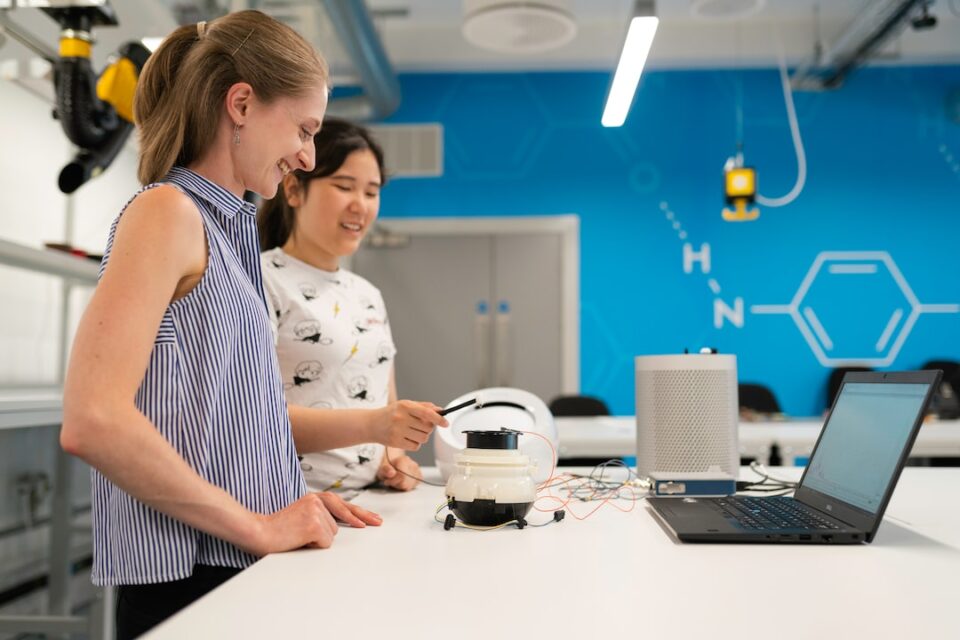The Integration of Virtual Reality in Engineering Design Processes
The field of engineering design has always been at the forefront of technological advancements. From the invention of the wheel to the development of complex machinery, engineers have continuously pushed the boundaries of what is possible. In recent years, the integration of virtual reality (VR) technology in engineering design processes has garnered significant attention, and for good reason. This immersive technology has the potential to transform the way engineers conceptualize, prototype, and test their designs.
Virtual reality involves the use of computer-generated visuals, sounds, and sensations to create a simulated environment that can be explored and interacted with. By wearing a VR headset, users can be transported to a computer-generated world where they can manipulate objects, experience realistic environments, and even interact with other virtual beings. The applications of VR in various industries like gaming and entertainment are well-known, but its potential in engineering design is only just starting to be fully explored.
One of the most significant advantages of using VR in engineering design is the ability to visualize complex systems and structures. Engineers often work with intricate designs that can be challenging to fully comprehend using traditional 2D models or computer-aided design (CAD) software. By creating a 3D virtual model of a product or system, engineers can examine every aspect from all angles and even dissect it to get a better understanding of its internal workings. This level of visualization can greatly aid in identifying design flaws, making improvements, and ultimately optimizing the design.
Moreover, VR allows engineers to test their designs in a virtual environment before creating physical prototypes. Traditionally, engineers would have to create physical prototypes, which can be time-consuming and costly. With VR, engineers can simulate real-world conditions and test their designs virtually, saving time and resources. For example, an automotive engineer can virtually test the aerodynamics of a car design or simulate how it would perform in different driving conditions. VR also enables engineers to analyze the ergonomics and usability of products before manufacturing them, leading to better user experiences.
Another aspect where VR shines in engineering design is collaboration. With VR, engineers from different locations can meet in a virtual environment and work together on a design project. This eliminates the need for physical meetings and enables real-time collaboration without geographical limitations. Additionally, VR provides a sense of scale that is often lacking in traditional communication tools like video conferencing. Engineers can see and interact with their designs at a human scale, which helps in better decision-making and problem-solving. This collaborative nature of VR can enhance the efficiency and effectiveness of engineering teams, especially in today’s increasingly globalized and remote work environments.
In addition to design visualization and collaboration, VR also offers opportunities for virtual prototyping and assembly simulations. Engineers can virtually assemble components, identify interferences, and test the functionality of a design without the need for physical prototypes. This not only saves time and material costs but also enables engineers to iterate on design concepts more rapidly. Furthermore, by creating simulations of manufacturing processes, engineers can optimize production workflows, identify bottlenecks, and minimize risks before scaling up for mass production.
However, despite its immense potential, the integration of VR in engineering design does come with challenges. One significant challenge is the cost associated with acquiring and deploying VR equipment and software. High-quality VR systems can be expensive, and the software development for engineering-specific applications can also be time-consuming and costly. Additionally, there is a learning curve associated with using VR technology, and engineers may require additional training to fully harness its capabilities.
Despite these challenges, the benefits of integrating virtual reality technology in engineering design processes cannot be ignored. The visualization capabilities, virtual testing, collaboration possibilities, and rapid prototyping offered by VR have the potential to revolutionize the field of engineering design. As the technology continues to advance and becomes more accessible, we can expect to see even more innovative applications in various engineering disciplines.
In conclusion, the integration of virtual reality in engineering design processes opens up exciting possibilities for engineers. From visualizing complex systems to testing designs in a virtual environment, VR has the potential to streamline and enhance the engineering design process. As the technology becomes more affordable and user-friendly, we can anticipate a widespread adoption of VR in engineering design, paving the way for more efficient, cost-effective, and forward-thinking engineering practices.

